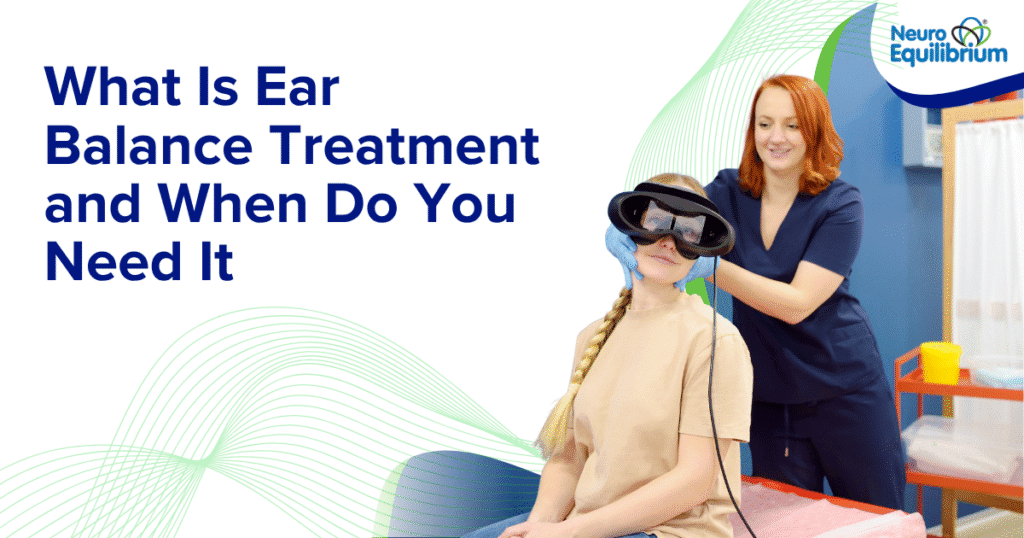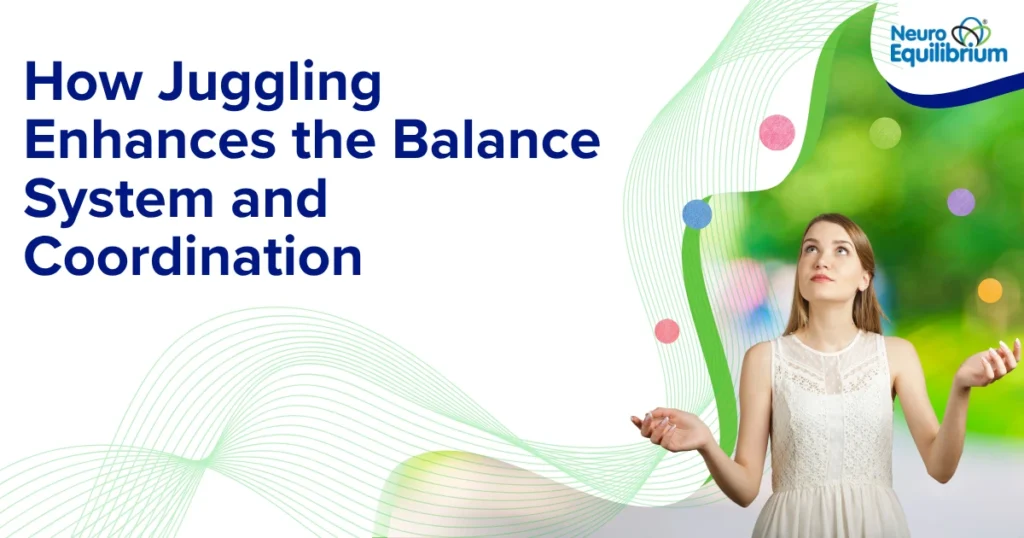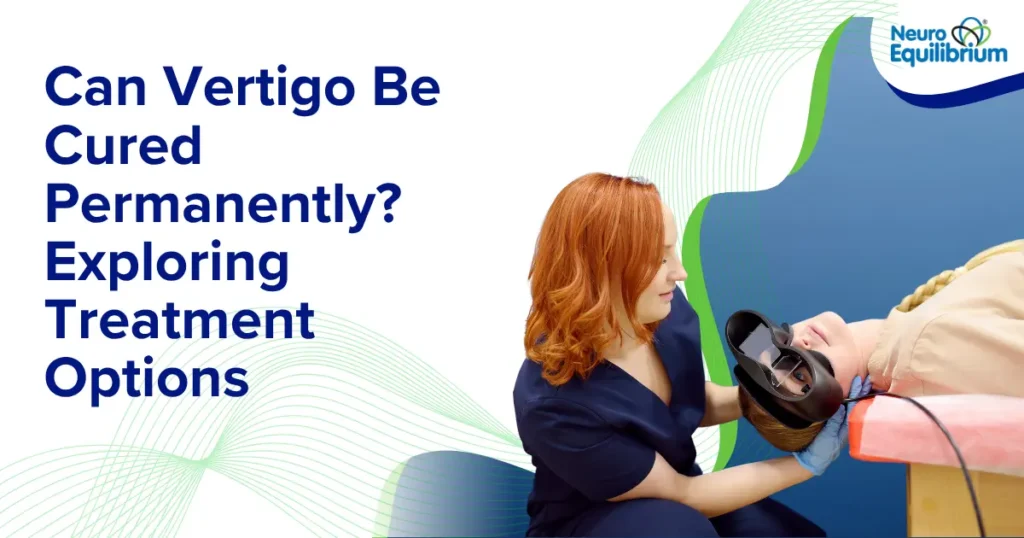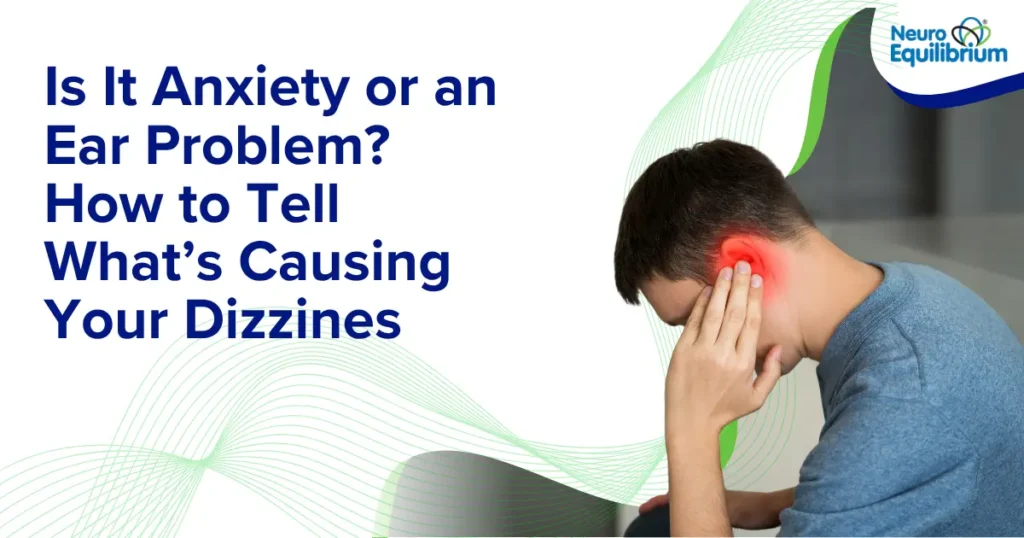The VEMP, Vestibular Evoked Myogenic Potentials, test is a medical test that checks how well the balance system in your inner ear is working.This test helps doctors figure out what’s the cause of vertigo (If you feel dizzy, unsteady, or like the room is spinning.
Why is the VEMP Test Done?
Your inner ear maintains your balance, collaborating with your auditory system to keep you steady and free from dizziness.
The VEMP test is a special test doctors use to check if certain parts of your inner ear — called the saccule and utricle — are working properly. These parts send signals to your brain to help with balance. If something’s wrong, the signals can get mixed up, and that can make you feel dizzy or off balance.
Doctors use the VEMP test to find out if someone has problems like Meniere’s disease, vestibular neuritis, or other inner ear conditions that mess with balance.
How Does the Test Work?
The test is quick, painless, and non-invasive. Here’s what usually happens:
You’ll be asked to lie down or sit in a comfortable position. The doctor or technician will place small sticky patches (electrodes) on your neck muscles or around your eyes. Then, you’ll hear clicking sounds or small vibrations through headphones.
These sounds trigger a reflex in your muscles kind of like how your leg jumps a little when the doctor taps your knee. The machine records how your muscles respond. This helps the doctor understand how your inner ear and balance system are functioning. At NeuroEquilibrium clinics, the VEMP test is performed using advanced equipment and is part of a complete balance assessment. The results help doctors find the exact cause of your dizziness so they can plan the right treatment.
What Does the VEMP Test Detect?
The VEMP test enables doctors to identify specific balance dysfunction types in patients. Doctors commonly use the VEMP test to recognize three specific conditions including Meniere’s disease, vestibular neuritis as well as BPPV. Analysis of inner ear sound responses enable the doctors to identify malfunctions throughout the balance system.
The diagnostic procedure at NeuroEquilibrium clinics consists of this test when treating patients with persistent dizziness, instability or vertigo patterns.
What to Expect During the VEMP Test
This simple procedure needs no needles or surgical intervention. The test requires you to choose between reclining on a bed or taking a seat in a chair. The procedure lasts 30 to 45 minutes, causing no discomfort. It generates minimal skin vibration and loud noises, which are typical. It’s completely safe and non-invasive. At NeuroEquilibrium’s advanced vertigo clinics, specially trained staff guide you through the test to make sure you’re comfortable and relaxed throughout.
How to Prepare for the VEMP Test
In most cases, you don’t need to do much to prepare. However, your doctor might ask you to:
- Avoid caffeine (like coffee or energy drinks) the day before and on the day of the test
- Skip certain medications that could affect your results (your doctor will let you know which ones)
- Be sure to wear comfortable clothes and let your doctor know if you’re feeling unwell before the test.
If you’re going to a NeuroEquilibrium clinic, everything will be explained clearly before your visit, and the team will make sure you’re fully prepared and informed.
Interpreting the Results
After your VEMP test, the doctor checks how your inner ear and balance nerves reacted to the sounds played during the test. If everything is working normally, your muscles will respond in a certain way. But if there’s a problem in the balance part of your ear, the response might be weaker than expected or may not show up at all.
At NeuroEquilibrium, we use special software and tools to carefully study these results and figure out exactly where the problem is. The test can help detect issues like vestibular neuritis, Meniere’s disease, or other inner ear problems that affect your balance.
Next Steps After the Test
Once the results are ready, your doctor will explain them to you in simple words, so you clearly understand what’s going on. If the test shows anything unusual, the next steps might include taking medicine, doing balance therapy, or getting more tests done if needed. Sometimes, you’ll be asked to come back for follow-up visits so we can see how well the treatment is working. At NeuroEquilibrium, we make sure everything is planned with your comfort and recovery in mind, so you always know what’s happening and feel supported throughout the process.
Conclusion
If you’ve been feeling dizzy or off-balance, the VEMP test can really help figure out what’s causing it. It doesn’t hurt and is totally safe. At NeuroEquilibrium, the test is done using advanced tools, and the results help doctors see if there’s a problem in the balance part of your inner ear. This means they can give you the right treatment instead of just guessing. You’re not just getting tested—you’re being looked after by experts who know exactly how to help with dizziness and balance problems.
FAQs: What is a VEMP Test?
What is the purpose of the VEMP test?
The VEMP test stands for Vestibular Evoked Myogenic Potentials as healthcare professionals perform it to evaluate the function of the body’s balance system in the inner ear. The saccule or utricle (inner ear components) together with their connected nerves undergo scrutiny when exposed to sound or vibration waves. Doctors can use this assessment method to determine exact balance disorder diagnosis including Meniere’s disease along with vestibular neuritis and benign paroxysmal positional vertigo (BPPV). The VEMP test serves to identify specific causes of dizziness and vertigo and unsteadiness, thus helps doctors develop effective treatments to restore your balance and stability.
Book a consultation at your nearest NeuroEquilibrium Clinic today.
Is the VEMP test painful or uncomfortable?
No, the VEMP test is completely safe and non-invasive. It doesn’t involve any needles or surgical procedures. During the test, small adhesive electrodes are placed on your neck or face, and you’ll hear clicking sounds or feel light vibrations through headphones. These sensations may be unusual, but they are not painful. The purpose is to trigger reflexes in your muscles, which are then measured by the device. Most patients report feeling comfortable throughout the procedure. It’s a quick and easy way for your doctor to gather important information about your balance system without causing discomfort.
Book a consultation at your nearest NeuroEquilibrium Clinic today.
How long does the VEMP test take?
The standard duration for conducting the VEMP test falls between 30 and 45 minutes. The medical procedure requires only a short amount of time during standard clinical appointments. The duration of testing depends on whether examination requires evaluation of one or both ears. The test duration is short because you’ll rest comfortably as the technician positions the electrodes and conducts targeted audio tests. After performing this test you can immediately get back to your regular activities because it involves no recovery period. Although limited in duration, the audiological assessment offers essential diagnostic details leading doctors to determine proper diagnosis and treatments for patients.
Book a consultation at your nearest NeuroEquilibrium Clinic today.
Do I need to prepare for the test?
The VEMP test requires minimal steps for execution. Your doctor might instruct you to abstain from consuming caffeinated beverages such as coffee and tea and to abstain from particular medications, both before and during the test period because they affect the assessment outcomes. NeuroEquilibrium specialists take all necessary steps to prepare patients physically and psychologically before tests begin so tests can proceed smoothly without causing stress to patients.
Book a consultation at your nearest NeuroEquilibrium Clinic today.
What happens after the test?
With completion of the VEMP test the doctor will interpret the test results that display reactions of your inner ear alongside its associated nerves to the applied sounds. Results of normal muscle reactions demonstrate a functioning balance system although weakened or absent responses indicate possible damage in certain parts of your vestibular system. Your doctor will interpret the test outcomes before recommending suitable treatment options such as medications, balance therapy and additional diagnostic checks. Additional appointments are sometimes scheduled to track patient improvement after diagnosis and initiation of treatment. The objective aims to create specific treatments which generate lasting relief for patients.
Book a consultation at your nearest NeuroEquilibrium Clinic today.
















